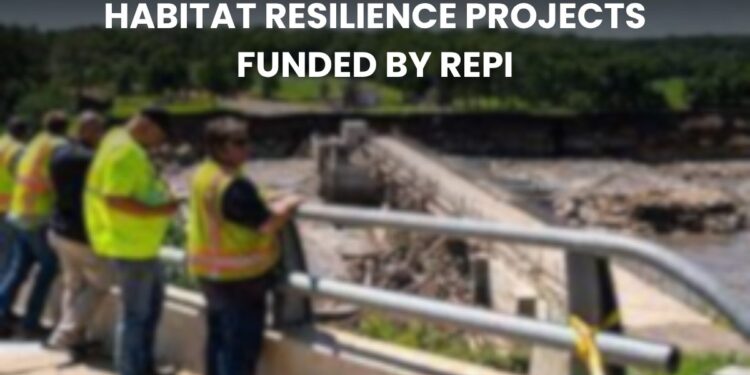The Readiness and Environmental Protection program supports habitat resilience and protects military readiness. The program invested in multiple projects; let’s see the projects or initiatives taken for habitat resilience.
The US Department of Defense initiated the REPI program to address environmental restrictions, prevent land use conflicts, and protect military readiness. The program funds the project that is aligned with the goals of the REPI.
Habitat resilience is important to protect the military installations from environmental impacts. The current climate change and environmental impact, climate, and habitat resilience are important for the future.
How does REPI fund the Habitat Resilience Projects?
The REPI program provides funding for habitat resilience projects to state, local governments, non-profit organizations, tribes, and other agencies in the following ways:
- The REPI funds cost-sharing partnerships between multiple stakeholders, such as military services, federal agencies, government, private organizations, and local or state governments.
- The program meets the cost-sharing requirements or matches the resilient or conservation program needs through the partnership and ensures every stakeholder’s contributions.
- The REPI Interactive map and other tools help in studying the project and evaluating if it is eligible for funding.
- The annual funding for the REPI is often between $5 million and $15 million for all types of projects meeting the purpose of the program.
What is the REPI funding cycle?
The REPI program generally issues the funding for the eligible or approved projects annually. The funding level of the REPI program for a year is determined in March, and it would generally be distributed around July.
The Notice of Funding Opportunity from the REPI program is issued in January for the fiscal year. The army installations’ representatives or partners began working with the REPI and their partners in the spring.
The submission of the project proposal is typically completed by the end of July, and the program authorities will review it in October. And by March 2025, the REPI funding will be finalized for the approved projects.
What are the measures considered for REPI funding of habitat resilience projects?
The REPI program evaluates the projects on several factors that may depend on the project, but here are some common factors:
- Military needs: The program funds the projects considering their effect on military installations and operations.
- Nature-Based Solutions: The program prioritizes nature-based solutions that will improve the military installation’s resilience and protect the natural resources & habitat.
- Environmental impact: The program will look into the impacts of the project, which will include the environmental, economic, and other impacts.
- Habitat restoration: In the habitat resilience projects, habitat restoration will be prioritized to ensure nature and military operations can go hand-in-hand without disrupting each other.
- Eligible activities: The program provides funds for only eligible activities that meet the program goals and proper planning. The REPI follows the Resilient project funding guide, where you can find the eligibility requirements, activities, application cycle, and much other information.
What are Habitat Resilience Projects Funded by REPI?
Here we have listed a few recent habitat resilience projects that got funding from the REPI program:
- $15 million investment for green spaces around military installations: The DoD and DoI will invest to preserve green spaces near the military installations from the REPI and the Land and Water Conservation fund.
- Naval Weapon state Yorktown: The Penniman Spit Restoration Project restored two acres of the Penniman Spit area through REPI and other partner funding.
- Coastal Resilience: The REPI provided funding for the National Coastal Resilience Fund to restore the coastal features and habitats that will protect the military installations and communities from rising sea levels.
- Fort Stewart: The REPI partner Fort Stewart protected the 50,000 acres and species like red-cockaded around the area, and now they are halfway to meeting their goals.
- Forest and land conservation: The REPI funded the project in the Mojave Desert to protect the natural habitat, such as the desert tortoise and the western Joshua tree, around the military installations.
The REPI program was started in 2002, and now the project funds many projects involving military land conservation for economic, environmental, and military benefits. The funding opportunity notice will be out in a few months, and the eligible project can apply and get the funding.











